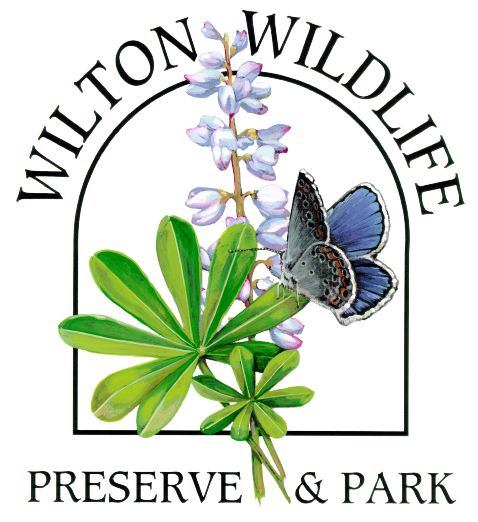Eastern Spadefoot Toad
A state-designated species of special concern, the eastern spadefoot toad was discovered in Wilton, its northern-most inland location, in 2001.
Photo by Kenneth Barnett
Description
The eastern spadefoot toad is small, with adults reaching lengths of 1.75” to 2.5”. Its name comes from a “single, dark-colored, horny, sickle-shaped structure – the spade – on each foot” (Chambers). The toad has smooth skin and upperparts that are usually brownish, with some individuals exhibiting gray or black. From behind each protruding eye, a green-yellow stripe begins. It curves towards the center of the body then towards the sides, then towards the center again. This pattern vaguely resembles an hourglass. The underside is usually whitish with a graying towards the rear.
History and Status
The spadefoot is found in the eastern United States; its range extends eastward from Alabama and northward from Florida into New York. This species is typically absent from high elevation areas. The eastern spadefoot toad was found at Wilton Wildlife Preserve & Park in 2001 which is its northern most inland location. In New York, the spadefoot is a state-designated species of special concern.
Life Cycle
The eastern spadefoot toad reaches sexual maturity at 17 months. Breeding occurs 1-3 times per year and is stimulated by heavy rain. Male spadefoots will float atop small bodies of water and call for females. The eggs are deposited in the water, and clutch sizes vary from 800-4500 eggs. These eggs hatch within two weeks and become terrestrial in 2-8 weeks. The eastern spadefoot toad's lifespan is 5 to 9 years.
Habitat
Eastern spadefoot toads live in areas with loose, sandy soil; their populations also tend to be found in areas with moderate temperatures and steady rainfall. They use the spades on their hind legs to dig themselves burrows that are 7-30cm deep. These burrows are found in a range of landscapes including grasslands, swamps, and farmlands. Their burrows are filled with leaf litter for protection and warmth. The eastern spadefoot toad breeds in temporary still water areas such as puddles or ditches.
Photo by Kenneth Barnett
Why are they a species of special concern?
Habitat loss is one reason that the eastern spadefoot toad has become a species of special concern in the state of New York. This species requires certain habitats including vernal pools and upland locations that have little legal protection and are being destroyed due to development. Land development also leads to fragmentation; this combined with habitat loss has led to population decline in spadefoot populations located in New York. The eastern spadefoot toad is vulnerable to pesticides and alterations in water chemistry due to agricultural practices. The spadefoot is also considered highly vulnerable to changes caused by global climate change. This species is also affected by ranavirus; this is one of the only viruses that is known to infect amphibians and reptiles.
What is being done?
The New York State Department of Environmental Conservation has produced management actions to be taken in order to protect the eastern spadefoot toad. Population monitoring should be conducted to see population trends. Providing secure vernal pool habitats will also help to increase populations. Invasive species management will also ensure the species it not out-competed. More research needs to be done on the spadefoot in order to better understand how different conservation actions affect them.
What can you do?
The best way to support the eastern spadefoot toad it to support organizations that help protect this species. The spadefoot rarely come out from underground, but don’t touch it if you see one; some people have allergic reactions to touching them, causing them to become itchy or sneezy. Instead, take a photo and report it to Wilton Wildlife Preserve & Park so that we can pass the information on to the correct people at NYS DEC.



